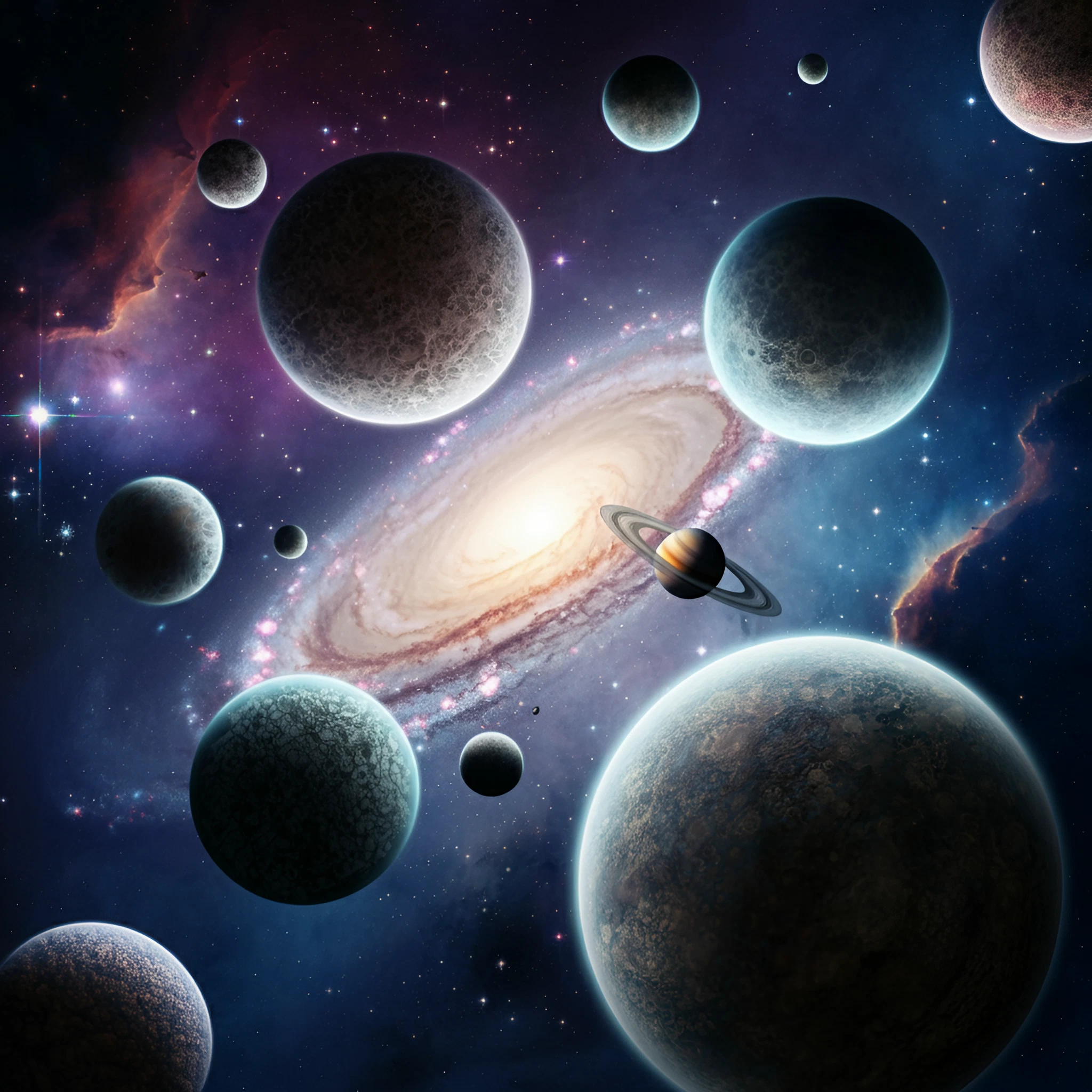The Milky Way, our vast galactic home, stretches across the cosmos with billions of stars twinkling within it. Over the years, astronomers have uncovered fascinating evidence suggesting that planets might be just as common as the stars themselves. But how many planets truly exist within the Milky Way galaxy? Let’s explore the numbers, how they’re estimated, and what kinds of planets fill our galaxy.
Estimated Number of Planets in the Milky Way
Recent studies suggest that the Milky Way galaxy contains at least 160 billion planets. This estimate emerges from detailed statistical analyses of planetary surveys. Scientists believe there is an average of 1.6 planets for every star in the galaxy. Given that the Milky Way harbors an estimated 100 billion to 400 billion stars, the total number of planets could range anywhere from 160 billion to over 300 billion or more.
These figures are conservative estimates and exclude some smaller or harder-to-detect planets. Many more worlds could exist within distant star systems still beyond our reach.
The Method Behind the Numbers
How do astronomers calculate such massive numbers? Researchers rely on planet-hunting missions and methods such as NASA’s Kepler Space Telescope, the radial velocity method, and microlensing. Using these techniques, scientists gather data about how common planets are, analyze star systems, and extrapolate those discoveries to the entire galaxy.
Fun Fact: The microlensing technique played a vital role in revealing that planets are the rule rather than the exception in our galaxy.
How Scientists Detect Planets
Astronomers use various sophisticated methods to detect planets, especially beyond our solar system. Here are three of the most prominent techniques:
1. Transit Method
This technique tracks slight dips in the brightness of a star when a planet passes in front of it. The amount of light blocked reveals the planet’s size and orbit.
2. Radial Velocity Method
By measuring the “wobble” of a star caused by the gravitational pull of an orbiting planet, astronomers can detect the presence of planets.
3. Microlensing
This method examines how light from a distant star bends due to the gravitational field of a closer object (e.g., a planet). Although rare, each microlensing event provides crucial data.
Each method has its strengths, and together, they’ve vastly expanded our understanding of planetary systems.
Different Types of Planets in Our Galaxy
Planets found in the Milky Way come in many shapes and sizes. They range from massive gas giants to rocky worlds smaller than Earth. Here are some of the major categories scientists have identified:
- Gas Giants
Planets like Jupiter and Saturn are composed primarily of hydrogen and helium. These dominate the larger size range of planets observed.
- Super-Earths
These rocky planets are bigger than Earth but smaller than Neptune. Super-Earths are abundant in the galaxy and may even harbor life under the right conditions.
- Neptune-like Planets
Similar to Neptune and Uranus, these worlds are icy and predominantly made up of water, ammonia, and methane.
- Earth-like Planets
Small, rocky planets within the habitable zones of their stars, where liquid water can exist, potentially fostering life.
Did You Know?
Scientists estimate that 62% of stars in the Milky Way likely host planets in the range of “super-Earths,” making them among the most common types of planets.
The Search for Habitable Zones
The “habitable zone” is a key focus in planet-hunting missions. This refers to the region around a star where conditions are suitable for liquid water to exist. Often called the “Goldilocks Zone,” these areas are neither too hot nor too cold for life as we know it.
While the majority of planets may not be located in these zones, finding habitable planets is a top priority for scientists searching for extraterrestrial life.
“We used to think the Earth might be unique in our galaxy, but now it seems there are billions of planets with masses similar to Earth orbiting stars in the Milky Way.”
- Daniel Kubas, Institut d’Astrophysique de Paris
How the Milky Way Compares to Other Galaxies
Although our galaxy boasts billions of planets, it’s just one of trillions of galaxies in the universe. Some galaxies, like elliptical and irregular galaxies, are thought to host fewer stars (and consequently fewer planets) than the Milky Way. Meanwhile, massive spiral galaxies like Andromeda might contain even more.
The comparison continues to evolve as astronomers obtain clearer images of distant galaxies and their stellar populations using modern instruments like the James Webb Space Telescope.
The Universe is Overflowing with Planets
With billions of planets in the Milky Way alone, it’s becoming clear that our solar system is just a small piece in an enormous galactic puzzle. From massive gas giants to rocky, habitable worlds, the diversity of planets is seemingly endless.
For curious minds and budding astronomers, the study of exoplanets and their characteristics offers ongoing excitement. And with modern technology continuously advancing, who knows? Perhaps one day you’ll help discover the next Earth-like planet in the Milky Way!








